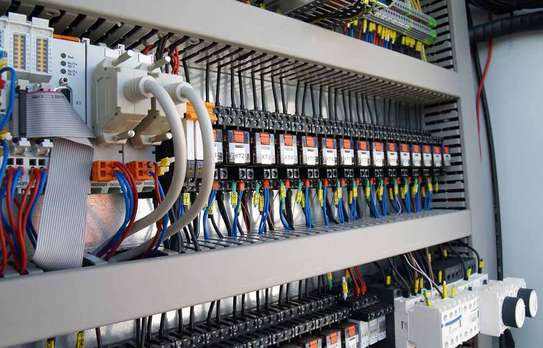Electrical installations are a crucial part of setting up any building, whether it’s residential, commercial, or institutional. In Kenya, getting connected to the grid requires a structured process that involves planning, choosing appropriate power options, and collaborating with Kenya Power and Lighting Company (KPLC). This article walks you through the entire process, from determining the type of installation to getting electricity into your premises.
Overview: How to Get Power to Your Premises in Kenya
To connect your premises to the power grid in Kenya, follow these key steps:
- Determine the type of installation.
- Choose the power supply type.
- Select a power supply plan.
- Hire an electrician for wiring your building.
- Apply for a power connection from KPLC.
- Make the required payments to KPLC.
- Get connected and enjoy electricity on your premises.
Types of Electrical Installations in Kenya
The type of electrical installation you require depends on the location and purpose of the installation. Understanding this helps determine the necessary materials and standards. The following are common types of installations:
- Residential Installations: This type is designed for homes, providing electricity for lighting, household appliances, and everyday electronics like TVs, refrigerators, and laptops.
- Commercial Installations: This includes setups like office buildings, rental properties, and small businesses. It often requires a higher power capacity to support equipment like printers, computers, and industrial machinery.
- Institutional Installations: Schools, hospitals, and churches fall into this category. Due to larger spaces and more people, these setups require more lights, outlets, and safety measures.
- Security Light Installations: These can be integrated into residential or commercial setups or done separately, providing lighting for outdoor areas and enhancing security.
- Fence Installations: Electric fences can be installed as standalone projects or as part of other installations. These are especially useful for security in farms and homes.
- Motor Control Installations: This is necessary where machinery is used, such as in manufacturing or water pumping. It involves setting up a power system that ensures motors receive adequate voltage and current for safe operation.
Choosing a Power Supply Type
In Kenya, there are two main types of power supply: Single Phase and Three Phase. The choice between these depends on the nature of your power needs:
- Single Phase: Suitable for most residential and small commercial installations. It provides a voltage of about 230V.
- Three Phase: This option delivers around 415V and is ideal for setups that need higher power, such as industries or large institutions. It’s more efficient for running heavy machinery but comes with a higher installation cost.
Power Supply Plans Offered by KPLC
KPLC offers two primary power plans:
- Prepaid Plan (Token Meter): This pay-as-you-go plan allows users to top up their power account using a paybill number. When the balance runs out, power is automatically disconnected until you top up again. It’s a popular choice for rental properties because tenants pay only for the electricity they use.
- Postpaid Plan: Users receive a monthly bill based on their electricity consumption. This plan is suitable for those who prefer to settle their bills at the end of each month. Payment can be made at KPLC offices or via their paybill number.
How to Start Your Electrical Installation
After choosing your power supply type and plan, you’re ready to start the installation process, which involves two main stages:
- Wiring of the Building: This must be done by a qualified electrician and involves setting up a wiring system for lights and sockets. The electrician will install cables, PVC pipes, a consumer unit (fuse box), a meter box, and other components.
- Applying for Power Supply from KPLC: After wiring is completed, the electrician issues a wiring certificate, which is required for KPLC’s application process.
Wiring Requirements and Materials
Your electrician will need specific materials for the wiring process, including:
- Electrical Cables: Different cable sizes are used for various purposes:
- 1.5mm² for lighting.
- 2.5mm² for sockets.
- 6mm² for the consumer unit and heavy appliances.
- PVC Pipes: Used to protect and organize cables.
- Consumer Unit (Fuse Box): Crucial for safety, it protects against electrical overloads and allows you to manage the distribution of power within the building.
- Meter Box: This is where the KPLC meter is installed, monitoring electricity consumption.
- Sockets, Switches, and Junction Boxes: Needed for connecting electrical devices and routing wires throughout the premises.
Application Process for Power Connection from KPLC
Once the wiring is complete, you can apply for power connection through KPLC. This can be done either physically at a KPLC office or online:
- Physical Application: Visit a KPLC office or a Huduma Center, and fill out the supply request form. You will need:
- Identification document (ID, passport, or driver’s license).
- KRA PIN certificate.
- A sketch of the route to your premises.
- Wiring certificate.
- Proof of property ownership or consent from the owner.
- Online Application: Visit the KPLC self-service portal, fill in the required form, and upload soft copies of the necessary documents.
After submitting your application, KPLC will conduct a site inspection to verify compliance with standards and assess connection costs. Upon approval and payment, KPLC will connect your premises to the grid.
Costs of Electrical Installation and Power Connection
For properties located within 600 meters of a KPLC transformer, the standard connection costs are:
- Single Phase: KSH 35,000.
- Three Phase: KSH 50,000. In some rural areas, subsidized rates of KSH 15,000 may apply under specific programs, but these are subject to availability. It’s best to confirm with KPLC for the latest rates.
Payment Methods
After being connected, you can pay for electricity through KPLC’s paybill services:
- Prepaid Paybill: 888880 (for buying tokens).
- Postpaid Paybill: 888888 (for settling monthly bills).
Safety Tips for Electrical Installations
Electricity is highly hazardous, so always follow safety protocols:
- Never touch exposed wires.
- Hire qualified electricians for repairs and maintenance.
- In case of electric shock, switch off the power supply before assisting the victim, then seek medical attention immediately.
Understanding Power Generation and Supply in Kenya
Kenya’s electricity is primarily generated by KenGen through various methods:
- Hydropower: Utilizes water from dams to generate electricity.
- Geothermal: Uses steam from the earth’s crust.
- Wind Power: Employs wind turbines to produce electricity.
After generation, high-voltage electricity is transmitted to KPLC power stations, where it is stepped down to safer levels for distribution. The power then reaches consumers through the national grid, ensuring that premises receive either 240V (single-phase) or 415V (three-phase) as needed.
Getting electricity connected to your premises in Kenya involves careful planning and adherence to KPLC’s guidelines. Understanding the process, costs, and safety measures ensures a smooth installation and reliable power supply. With this guide, you can make informed decisions for your electrical installation needs.





